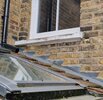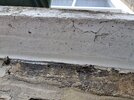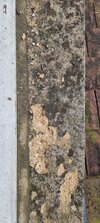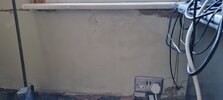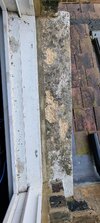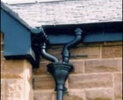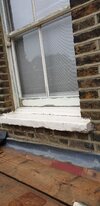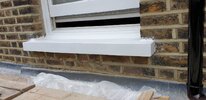The window sills outside my windows have deteriorated. One is cracked the others seem in one piece (and have possibly become porous). It was painted with masonary paint but that has peeled off. I'd like to repair it rather than replace it.
Here is how I thought of doing it: chisle off any loose bits. PVA on the sill. Make a form and apply a cement mix and smooth over.
Is this the right way of repairing it? Is a cement + pva mix the right material to use (if so whats the minimum thikness)? If not, whats a better material?
Here is how I thought of doing it: chisle off any loose bits. PVA on the sill. Make a form and apply a cement mix and smooth over.
Is this the right way of repairing it? Is a cement + pva mix the right material to use (if so whats the minimum thikness)? If not, whats a better material?


